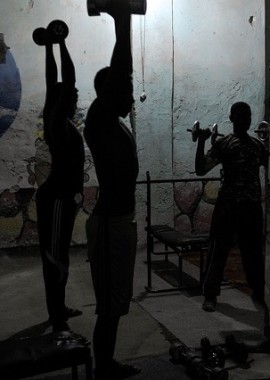An article in the Washington Post this week talked about the expanding industry that handles workout related injury. The more people get into high intensity workout regimens, the more we see significant injuries and there is an idustry that is growing because of it. For more on that, I recommend reading the article. I want to talk about a specific quote from it, credited to Lauren Roxburgh:
“In our lifestyle it’s been very much about the doing. . . . It’s all about pushing through, doing, doing, doing, and it hasn’t been enough about the yin, which is the being, being in the moment, being present in our bodies.”
The Problem With ‘Doing’
The emphasis in our society is all about the doing. A myth exists that everything can be bent to our will, forced into compliance by will-power; that we can “do” something about it. This belief has a consequence, which is that we are always searching for the right tool out there that our problem, whatever that may be, will not be able to withstand.
As the quote correctly states, there is an unfortunate cost to this. Intent and mindfullness get lost, replaced by a frenzy of activity in the hopes that once we have done enough the rewards will materialize and the ‘problem’ will be vanquished. If you stop to reflect, you can see that there are plenty of high profile brands out there of exactly this mentality. However, just like taking a shotgun where a scalpel is needed, collateral damage ensues whose consequences may turn out to be even bigger than the initial problem.
What It Means For Exercise
It all boils down to this: We should not approach exercise as simply a ‘do’ that is inherently going to work out well. Instead, we must evaluate where we are and what specifically we need because, in the end, it is never the specific workout that matters, it’s how you perform it.
Take a squat for example. Squats are pretty universally recognized as a great exercise. But this is the case not because the squat is somehow in and of itself good, but rather because a well-performed squat is the outcome of a whole series of components, that in and of themselves are good things. For example, a well performed squat includes a straight spine that has not lost stability and bent. A stable spine in and of itself is a good thing. A good squat will have a proper depth because the ankles, hips, t-spine and shoulder girdle have the necessary range of motion. Mobile ankles, hips, t-spine, and shoulder girdle are all in and of themselves good things. A proper squat will have all of the lower body muscles functioning and functioning in the proper sequence. Functioning lower body muscles with proper sequencing is in and of itself a good thing. A good squat has proper knee alignment. Proper knee aligment is in and of itself a good thing. In other words, the ‘squat’ is just the outcome of these and other good things, it is not in and of itself what is so important.
Conclusion
The point is that we need to be more conscious about how we choose our workouts and what the reasoning behind those choices is. No workout is good just because it is, and no one should be working out just because ‘doing’ a workout is good. Every workout, and every exercise, needs to serve a purpose and help lead someone from point A to point B. When we jump into workouts because we believe for whatever reason that they are great, without having an understanding of how that system fits into ourselves and our lives, we tend to get hurt.
Related
It’s Not About The Weight, Do The Movement

Short, sweet, and smart. Loved how you made a big point with little amount of words.
Thank you!